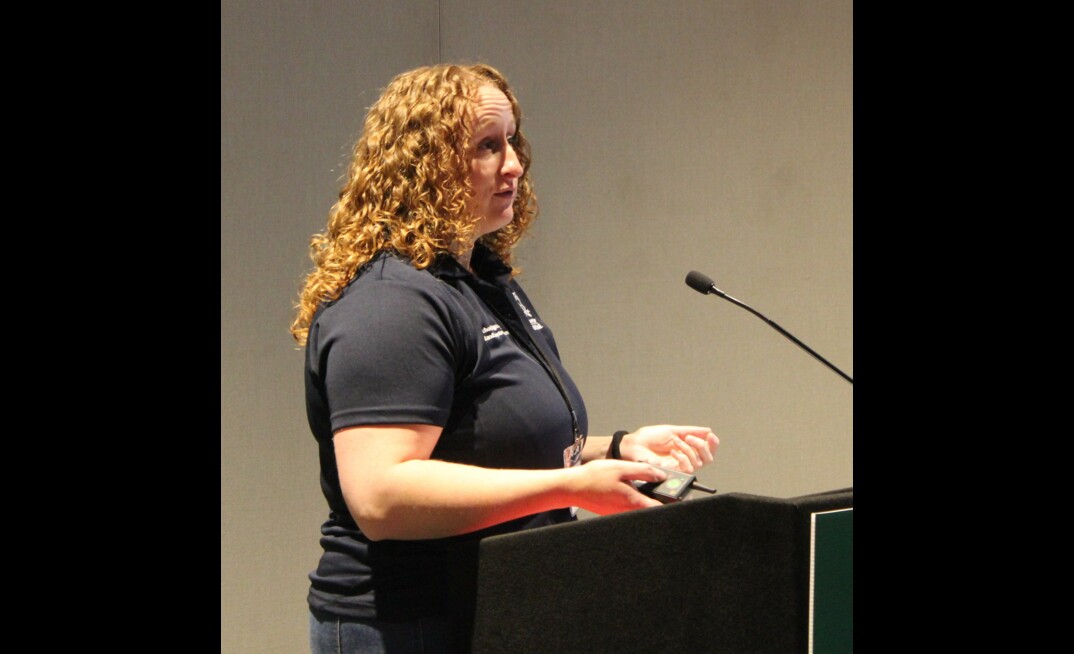The new scales were initially designed for the Grains Research and Development Corporation (GRDC)-funded National Phenology Initiative, to improve simulation of flowering time in APSIM, upon realising that the currently available scales were not sufficient.
University of Melbourne research fellow, Dr Corinne Celestina, who spearheaded the creation of the scales, said a scale was needed which was reliably repeatable.
"I needed to be able to hand the same protocol to different people, and everyone get the same answer if assessing the same plants," Dr Celestina said.
"We were dealing with diverse wheat and barley cultivars, all with different phenology, we had different operators and diverse expertise, but we needed something where the agronomists, geneticists, modellers and statisticians were all speaking the same language when reporting on crop stage."
The two new scales are the Single Culm Development Scale (SCDS), and the Population Culm Development Scale (PCDS).
The SCDS consists of defined phases from sowing to grain ripening, with individual phases within each stage.
"Some stages occur concurrently; some overlap a bit. This scale is designed to account for that," Dr Celestina said.
The SCDS is a single observation measured on a primary culm, compared to the PCDS, which measures all culms in a population and specifically defines the methods of how to measure the start and end of stages.
"The PCDS is concerned with questions like ‘when did this crop reach 50pc heading,', and ‘how long was that phase', and is more what a researcher or an agronomist would be interested in doing," Dr Celestina said.
"SDCS is more of a Zadoks style of assessment."
A paper about the new scales was released last year, which compares timepoint definitions in the new scales, to their closest corresponding score for existing scales such as Zadoks.
"We want to make it as clear as possible, so for each phase, an illustration shows what we are talking about, and how to collect measurements which are clear and exact rather than ambiguous," Dr Celestina said.
LIMITATIONS ON PREVIOUS SCALES
Dr Celestina said a major limitation of the Zadoks growth scale - as well as other scales such as Feakes and BBCH - were the definitions of similar but distinctly different terminologies, such as growth and development.
"All of the other scales are talking about growth, when really we should be talking about development," she said.
"For a lot of applications that's not a big issue, but for precision and scientific accuracy and reporting, it can be a problem.
"Growth is about the assimilation of carbohydrates, biomass and getting bigger, whereas development is about progression through the crop lifecycle overtime. It's a bit like getting fatter, versus getting older."
Phase and stage are two other terms which are not clearly defined in existing scales, according to Dr Celestina.
"A phase progresses over time, whereas a stage is a point within a phase, or a transition between phases.
"These scales are very deliberate with what terminology is used, to avoid any confusion and make measurements as clear and objective as possible," she said.
USE IN INDUSTRY
With the new scales being very useful from a research perspective, Dr Celestina was realistic that it would not catch on at the farmgate overnight.
"Agronomists and growers probably aren't going to go out and use it straightaway, but if you're in the business of research or need to give precise communication of stages and phases you're talking about, we recommend using these new scales," she said.
For those in the field willing to take on the use of the new scales, Dr Celestina said it was a step towards doing things a bit better, and eliminated some guesswork.
"There are product labels that might say apply at Zadoks 13 and then have another application at Zadoks 21, which is three-leaf or first tiller. In most populations of wheat, those two points happen at the same time. So, are you recommended to apply the product twice, or does the recommendation actually correspond to a different stage?
"There is often a lack of clarity in labels, and if you really want precise timings, you're just introducing error.
"It's another step towards doing things a bit better, best practice, a bit closer to the optimal. If you're saving some money on sending the spreader out, or putting a fungicide out at a particular time, because we know the stage of our crop more accurately, it's probably going to be more worthwhile," she said.
Dr Celestina said it would be ‘ideal' if the new scales were used across industry and research.
"We use Zadoks, Feakes, BBCH - we haven't changed in 50 years. We know those scales aren't perfect, but we're confident that these ones are a bit better," she said.
"I would love to see the new scales used in the National Variety Trials, which would be another big hurdle of change, but it would be good for accuracy and making sure everyone is measuring things the same way and reporting those measurements without ambiguity."
CONTACT
Corinne Celestina
University of Melbourne research follow
corinne.celestina@unimelb.edu.au
RESOURCES
C Celestina, J Hunt, H Brown, N Huth, M AndreuccI, Z Hochman, M Bloomfield, K Porker, M McCallum, F Harris, M Matthews, B Biddulph, G Al-Yaseri, D Nicol, J Hyles, E Wang, B Zheng, Z Zhao, M Kohout (2023) Scales of development for wheat and barley specific to either single culms or a population of culms. European Journal of Agronomy. 147, 126824.
























